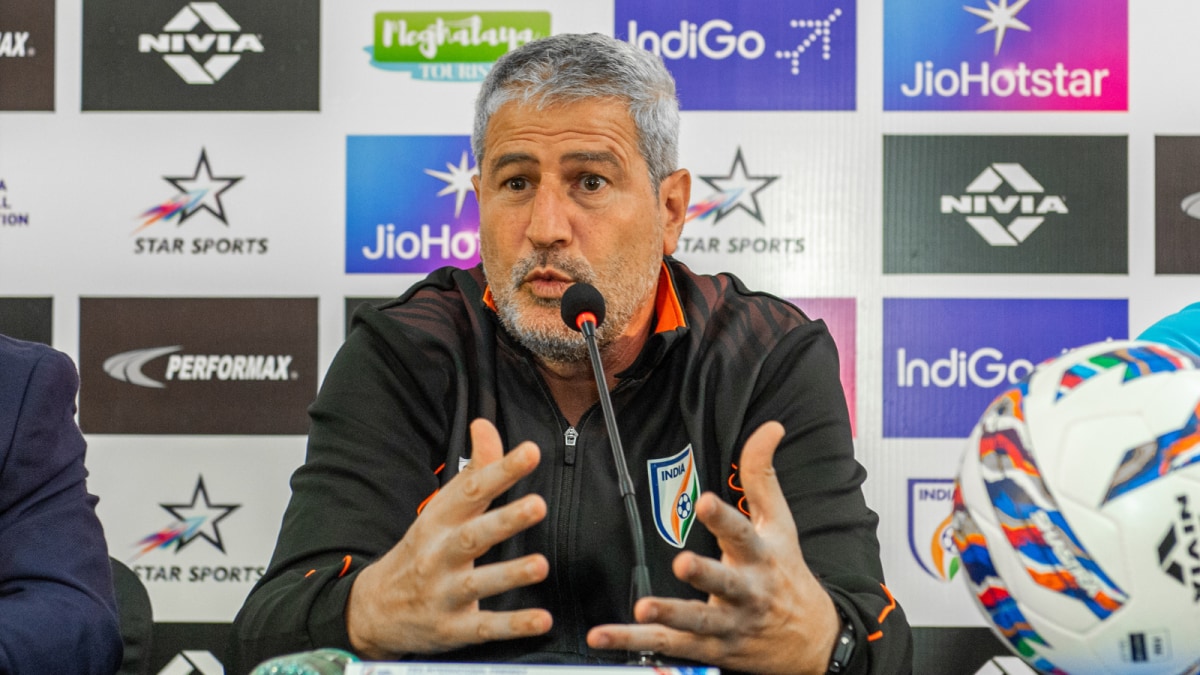ARTICLE AD BOX
Last Updated:July 16, 2025, 13:57 IST
Designed to dominate hostile terrain with precision strikes, the AH-64E Apache is among the world’s most advanced attack helicopters. The first three are expected next week

An Apache Guardian helicopter (Photo: PTI)
India is all set to receive the first three of six AH-64E Apache attack helicopters next week, marking a significant milestone in the Indian Army’s aviation modernisation plans. The delivery comes under a deal signed with the United States in 2020 and will provide a serious boost to India’s combat readiness along the western border.
But what exactly is the Apache helicopter, and how does it enhance India’s air defence and strike capabilities?
What Are Apache Helicopters?
The AH-64E Apache is one of the world’s most advanced attack helicopters, designed to deliver powerful strikes in hostile combat zones. Manufactured by US defence giant Boeing, the Apache is currently operated by the armed forces of countries like the United States, the UK, Israel, Egypt, and now India.
India first acquired 22 Apache helicopters for the Indian Air Force under a 2015 agreement. The six new ones being inducted are for the Indian Army’s Aviation Corps.
According to Boeing, the Apache is equipped with “the latest communications, navigation, sensor, and weapon systems." These include an upgraded targeting system, called the Modernised Target Acquisition Designation System, that helps pilots identify and strike targets in both day and night conditions, and even in poor visibility due to rain, dust, or fog.
The helicopter is armed with a powerful 30 mm chain gun, laser- and radar-guided Hellfire missiles for precision strikes, and rocket pods capable of engaging multiple ground targets. It also features the Longbow radar mounted above the rotor—allowing the Apache to detect, track, and prioritise threats without direct exposure.
The AH-64E is built for tough missions. It combines agility with battlefield durability through powerful engines, reinforced rotor blades, and advanced survivability systems. It is designed to fly low, strike fast, and return safely—even in the most challenging environments.
What Is The Apache Deal India Signed?
In February 2020, the Indian government approved the procurement of six AH-64E Apaches in a deal worth around $600 million. This was in addition to the earlier IAF purchase.
At the time, Boeing stated: “This order will expand the Indian Army’s capability to provide integrated combat aviation support to land forces."
When Will The Apache Helicopters Arrive?
According to NDTV, the initial batch of three Apache helicopters is scheduled to arrive next week. They will be delivered to the Indian Army at Hindon Air Force Station, where they will undergo a joint inspection by Boeing, US officials, and Indian authorities.
The remaining three helicopters are expected to arrive later in the year.
Missed Delivery Deadlines
The delivery has faced two previous delays. Originally scheduled for June 2024, the handover was first postponed to December 2024 due to supply chain disruptions. It was then pushed to July 2025, with the final three helicopters now likely to be delivered before the end of the year.
Where Will The Army Deploy These Helicopters?
The Indian Army raised its first Apache unit, 451 Army Aviation Squadron, in Jodhpur on March 15, 2024. This squadron is now set to receive the incoming helicopters, beginning formal induction.
Basing the squadron in Jodhpur suggests the Apaches will primarily operate along the western border with Pakistan, particularly across the desert terrain of Rajasthan. In this region, the helicopters will support ground forces with rapid strikes, anti-armour operations, and close air support—capabilities crucial in fast-moving battlefield scenarios.
How Are Apache Helicopters Different From Other Platforms India Uses?
India already fields the indigenously developed Light Combat Helicopter (LCH) ‘Prachand’ and the armed version of the Dhruv helicopter, called ‘Rudra’. However, the Apache brings a different level of capability in terms of endurance, targeting precision, and firepower.
The Apaches offer superior survivability and are intended to operate in high-intensity conflict environments, including those with fortified enemy positions, armoured columns, and advanced air defences.
While the Prachand is optimised for high-altitude combat—such as in Ladakh—the Apache excels in open terrain and semi-urban warfare, especially in armoured support roles. This diverse fleet gives the Indian military flexibility to respond to a wide range of threats.
What Makes The AH-64E Special?
According to Boeing’s official product details, the AH-64E offers key upgrades over previous versions:
- Increased Power and Agility: Enhanced engines and rotor systems improve speed and manoeuvrability.
- Improved Targeting: The Modernized TADS/PNVS system provides high-resolution infrared imaging.
- Fire Control Radar: The Longbow radar can detect and prioritise multiple targets in complex battlefield conditions.
- Networking Capability: Real-time data sharing and the ability to team with UAVs, enabling Apache pilots to control drones mid-flight.
These features allow the Apache to conduct high-precision strikes at longer ranges and operate effectively even in densely defended airspace.
How Does The Apache Fit Into India’s Air Defence Strategy?
Unlike traditional air defence platforms like missile systems or interceptor aircraft, the Apache operates at low altitudes and engages targets from close range. Its ability to fly nap-of-the-earth missions allows it to neutralise threats before they can threaten ground forces or air bases.
In addition to strike missions, the Apache plays a vital role in reconnaissance and battlefield surveillance. Its advanced sensors, real-time video feeds, and target-tracking systems allow it to scout enemy positions and relay critical information—capabilities that are increasingly important for networked air-land operations.
With radar warning receivers, missile countermeasures, and high battlefield agility, the Apache enhances India’s ability to operate in contested airspace, filling a crucial gap in its layered air defence system.
Why Is This Induction Significant For The Indian Army?
This is the first time that the Indian Army—rather than the Indian Air Force—will operate Apache helicopters. The move reflects the Army’s push for dedicated close air support under its direct control, enabling faster coordination with ground forces in high-threat zones.
The helicopters are expected to significantly enhance tactical mobility and strike capability, particularly in armoured warfare contexts along the western frontier.
This model aligns with global military practices. Countries like the US and UK equip their ground forces with direct access to attack helicopters for battlefield support.
What’s The Strategic Message?
India’s induction of Apache helicopters is not just about firepower—it’s also about deterrence and regional signalling. By basing these helicopters near the Pakistan border, India strengthens its immediate response capacity in a sensitive sector.
The deployment also comes at a time when troop presence has increased along the western frontier in the aftermath of Operation Sindoor—India’s cross-border military response to the Pahalgam terror attack earlier this year. The Apaches are expected to reinforce this enhanced forward posture by delivering mobile strike and reconnaissance support in high-risk zones.
This move also underlines India’s broader military modernisation, amid evolving threats across both western and northern borders.
India’s Broader Helicopter Capability Push
The Apache deal comes alongside India’s growing investment in indigenous platforms. In March last year, the Indian Army signed a contract for 25 Advanced Light Helicopters (ALH Dhruv Mk III). The Defence Ministry finalised two contracts worth over Rs 8,073 crore to procure 34 ALH Mk III helicopters—25 for the Army and 9 for the Coast Guard—marking a major step toward indigenisation in India’s rotary-wing fleet.
Conclusion
The arrival of AH-64E Apache helicopters for the Indian Army marks a major leap in India’s combat capabilities. With state-of-the-art sensors, precision-guided weapons, and all-weather operational readiness, the Apache is set to transform how India delivers close air support and executes deep strike missions.
Crucially, it gives the Indian Army independent access to advanced aerial firepower, enhancing both tactical flexibility and rapid response potential in critical sectors.
For India’s broader air defence architecture, the Apache adds a mobile, combat-proven platform that strengthens integrated warfare capability and fortifies deterrence along sensitive borders.
With this induction, India not only sharpens its military edge but also deepens strategic defence ties with the United States, reinforcing its position as a serious regional power.

Karishma Jain, Chief Sub Editor at News18.com, writes and edits opinion pieces on a variety of subjects, including Indian politics and policy, culture and the arts, technology and social change. Follow her @kar...Read More
Karishma Jain, Chief Sub Editor at News18.com, writes and edits opinion pieces on a variety of subjects, including Indian politics and policy, culture and the arts, technology and social change. Follow her @kar...
Read More
- Location :
- First Published:
News explainers The Helicopter That Hunts Without Being Seen: What Apache Will Add To India’s Air Power
Disclaimer: Comments reflect users’ views, not News18’s. Please keep discussions respectful and constructive. Abusive, defamatory, or illegal comments will be removed. News18 may disable any comment at its discretion. By posting, you agree to our Terms of Use and Privacy Policy.



.png)
.png)
.png)
















 11 hours ago
8
11 hours ago
8







 English (US) ·
English (US) ·